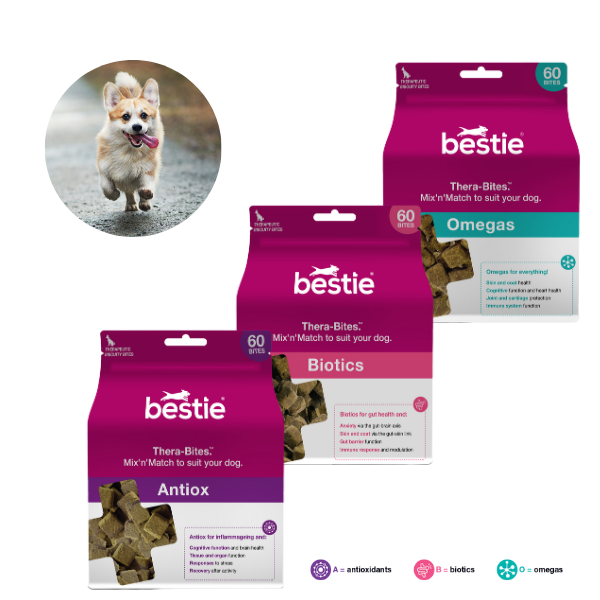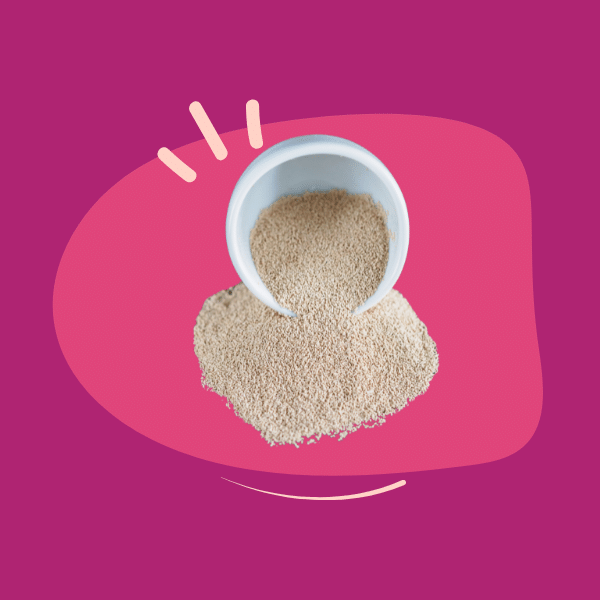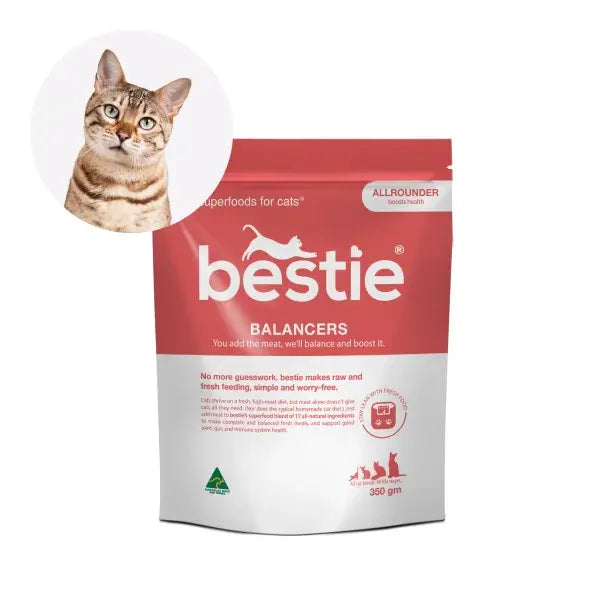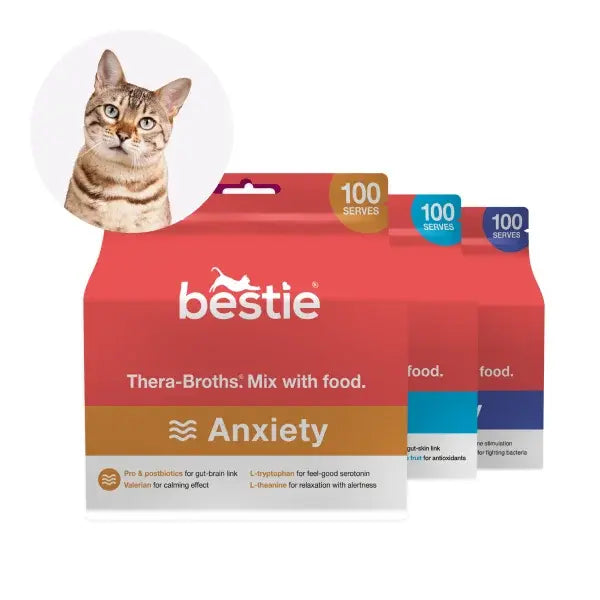The human obesity epidemic is well-known, but the spread of the canine epidemic may be more of a surprise. A fear of ‘fat shaming’ and ‘optimism bias’ may stand in the way of fixing it.
You might think the word ‘epidemic’ is too sensational to apply to obesity in dogs. However, in Australia, 41% of dogs are overweight or obese (1). In the US, it’s almost 56%. Worldwide, it’s 59% with about 21% of dogs overweight by the age of six months (2). Those figures have been climbing rapidly – 158% over the last 10 years, in the US (3).
The problems that result are myriad. Obesity is essentially a state of chronic inflammation, which leads to a host of diseases, like cardiorespiratory, endocrine, metabolic, orthopaedic and urogenital disorders, body dysfunction, and cancer.
Over the past 10 years, for example, arthritis and tracheal collapse have increased by 82% and 83% respectively (4). A recent study of 50,000 dogs also showed that the lifespan of overweight dogs was up to two and a half years shorter than their ideal-weight counterparts (5).
US insurer Nationwide Mutual reported the top obesity-related conditions found in dogs based on 630,000 insured pets: (13)
- Arthritis
- Bladder/urinary tract disease
- Liver disease
- Low thyroid hormone production
- Torn knee ligaments
- Diabetes
- Diseased disc in the spine
- Chronic kidney disease
- Heart failure
- High blood pressure
Association for Pet Obesity Prevention founder Dr Ernie Ward, says that excess fat causes an ‘adipokine storm’ inside your dog’s body.
“Adipokines are signal proteins produced by fat tissue…We know adipokines cause or contribute to hundreds of harmful inflammatory processes throughout the body. Think of every fat cell as a little factory pumping out hundreds of potentially toxic compounds. Multiply that by millions or billions in an obese pet.The real danger of excess fat isn’t the fat; it’s the inflammation the fat causes." (6)
My dog’s not fat!
Despite the data on overweight dogs, owners’ perceptions aren’t always in sync. According to the Banfield State of Pet Health 2012 Report, 76% of dog owners believe their dogs are an ideal weight. This finding is echoed by Professor of Small Animal Medicine at the University of Liverpool Alex German.
“Owners are often unaware that their dog is overweight, and many may not realise the impact that it can have on health… Worryingly, it is estimated only one in five pet owners always measures how much food they are giving their pet, with four in five (87%) always or often simply estimating the amount of food they think their pet needs at each serving.” (7)
Not only that, but other studies show that overweight people are more likely to own overweight dogs! (8)
Ernie Ward believes that while people know obesity is dangerous, they just don’t think anything bad will happen to them or their pet. He links this to ‘optimism bias’, our tendency to overestimate the probability of positive events and underestimate the probability of negative events happening to them in the future.
Other studies show that vets were reluctant to talk about obesity, for fear of offending the guardian. (Lack of time is another factor.) (9)
A Sydney study found that “fewer than expected of the owners of dogs in the overweight group were informed of their dog’s weight classification, suggesting that some veterinarians may be compounding the reluctance of some owners to admit that there is a problem.”10
How to reduce your dog's weight
Portion control tops the list of most weight management recommendations. (The bestie app helps with this. Many owners report that their dog's weight reduces once tey start on bestie, and use the bestie app.)
However, while some advice equates portion control with calorie control, a calorie is not just a calorie.
Studies show that high-protein, low-carb diets may also be key to weight loss and management (11). With these diets, weight loss is driven primarily from an increased loss of fat mass while maintaining lean muscle mass.
Low carbohydrate diets also help stabilise blood glucose levels throughout the day, preventing the hypoglycemia after a high carbohydrate meal that causes hunger. (12)
But how will you know if your dog's overweight?
While there are a number of body composition charts, the 9-point Body Condition Score system has been more extensively validated, for example by comparing scores against precise measures of body fat mass using dual-energy X-ray absorptiometry, (DEXA). It is also the system that has been recommended by the WSAVA Global Nutrition Panel.
(You can see that below.)

SOURCES
- Pet Food Industry Association of Australia Obesity Fact Sheet
- https://petobesityprevention.org/about
- https://www.banfield.com/state-of-pet-health/obesity
- https://www.banfield.com/Banfield/media/PDF/Downloads/soph/2017OPH-Infographic.pdf
- Salt, C, Morris, PJ, Wilson, D, Lund, EM, German, AJ. Association between life span and body condition in neutered client-owned dogs. J Vet Intern Med. 2019; 33: 89– 99. https://doi.org/10.1111/jvim.15367
- http://veterinarybusiness.dvm360.com/inflammation-new-obesity
- https://www.sciencedaily.com/releases/2019/01/190103110747.htm
- Muñoz-Prieto A, Nielsen LR, Dabrowski R, et al. European dog owner perceptions of obesity and factors associated with human and canine obesity. Sci Rep. 2018;8(1):13353. Published 2018 Sep 6. doi:10.1038/s41598-018-31532-0
- Kipperman, Barry & J German, Alexander. (2018). The Responsibility of Veterinarians to Address Companion Animal Obesity. Animals. 8. 143.10.3390/ani8090143.
- Greevy, Paul & Thomson, Peter & Pride, C & Fawcett, Anne & Grassi, Tanya & Jones, Bidda. (2005). Prevalence of obesity in dogs examined by Australian veterinary practices and the risks involved. The Veterinaryrecord. 156. 695-702. 10.1136/vr.156.22.695.
- Marianne Diez, Patrick Nguyen, Isabelle Jeusette, Claire Devois, Louis Istasse, Vincent Biourge, Weight Loss in Obese Dogs: Evaluation of a High-Protein, Low-Carbohydrate Diet, The Journal of Nutrition, Volume 132, Issue 6, June 2002, Pages 1685S–1687S, https://doi.org/10.1093/jn/132.6.1685S
- Tiffany Linn Bierer, Linh M. Bui, High-Protein Low-Carbohydrate Diets Enhance Weight Loss in Dogs, The Journal of Nutrition, Volume 134, Issue 8, August 2004, Pages 2087S–2089S, https://doi.org/10.1093/jn/134.8.2087S
- https://press8.petinsurance.com/articles/2018/january/pet-obesity-onthe-rise-for-seventh-straight-year


















